Currently running through October 16, 2022, at the Museum of Arts in Fort Collins, Colorado, the exhibition A Culture Preserved (in the Black Experience) was born out of the need to draw attention to the racial inequality in our country by drawing attention to the poor representation of Black artists’ work being collected by major museums and other public institutions. It is not that our work isn’t good enough, it is just that in the eyes of certain individuals it does not fit within the American or European cultural narrative.
Much like the Museum of Arts in Fort Collins, Black Americans and other minorities are just a blur in Fort Collins’ big picture. Google states: “Fort Collins, Colorado, sits just north of Denver, Colorado. Its Old Town historic district has 1800s houses, a vintage trolley, specialty shops and restaurants. The Fort Collins Museum of Discovery features interactive science, history, and nature exhibits, plus a digital dome theater. West of the city, trails crisscross Horsetooth Mountain Open Space, known for the peak’s distinctive Horsetooth Rock formation and Horsetooth Falls. Elevation 5,003 population 166,069.”
There’s not one mention of the Museum of Arts, even though it was here long before the Museum of Discovery. Of the 166,069 population black Americans make up a hefty 1.6 percent. However, you rarely see us represented in publications or advertisements for the city. This is the space I occupy in the story, a Black American woman in a relatively white town. I am originally from Chicago and living in a town where you see very few people and things that reflect you and your culture takes some getting used to. I have been in Fort Collins for a number of years, and I like it. The pace is slow and the traffic, not bad to someone coming from Chicago. The art scene could use a little work; however, the racial visual narrative definitely leans toward the unbalance when it comes to representing the Fort Collins population as a whole. The city’s public narratives are lacking in color in their overall presentation to the world, but hey, I figure that is why I am here. Stirring the pot.
Following some incidents at Colorado State University dealing with race and just the whole of 2020, I decided it was time for change. I started my new mantra, “Change where I stand.” In 2020, I created the Beauty of Blackness Fine Art Show in Fort Collins, A visual Arts Expo of work by Black American artists. Each September during Labor Day weekend. It is small right now, but my hope is to literally flood Fort Collins with Black American culture and people. At a Juneteenth gathering in 2020, I showed an exhibit of my own work called We Are Still Watching to incite dialogue with the public gathered in Old Town Square. The response was most people felt they had been robbed of their education; they were saddened by the fact that they were lied to and cheated out of the truth all these years. Because they knew so little about the contributions that Black Americans had made, as well as about some of the things that white people had done to stop their progress. My finding during this time was that most people want to be united as a human race.

All photos courtesy of Louise Cutler
Artist Charly Palmer stated: “Art should change the temperature in the room”
Towards the end of 2020, I reached out to the Director of The Museum of Arts in Fort Collins, Lisa Hatchadoorian. And the exhibit A Culture Preserved in the Black Experience‘ was born. Lisa was open to my idea of an art exhibit featuring all Black American artists. It had never been done before in Fort Collins. But that was not the only reason for doing it. She also, like I, wanted to draw attention to the lack of representation Black artists had in museums as well as the unfair treatment of Black Americans in this country. The exhibit was originally slated for January 2021 to fill a void in the museum’s exhibit schedule after 2020 left the museums budget low. After much conversation and discussion, she decided to move it to 2022. This move allowed the museum to raise the money to bring it in correctly as well as give it a prime space on their exhibit schedule.
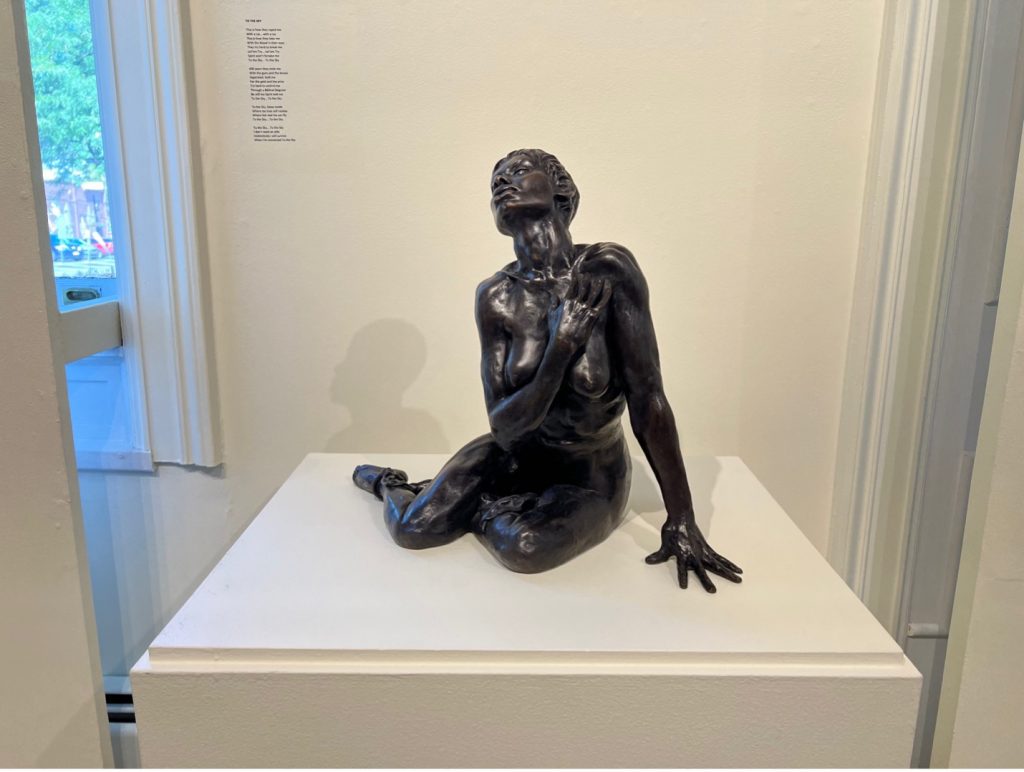
All photos courtesy of Louise Cutler
I remember years ago when Lisa took over as the new museum director, many spoke well of her and her desire to see more impactful exhibits at the museum. Lisa is an innovative person that thinks outside the boundaries of the norm. She understood what I was trying to convey to Fort Collins and the world. Fort Collins and the world need exhibits like this.
Actor Tom Hanks recently did an interview where he stated he found out about the Tulsa Race Riots and Black Wall Street two years ago because of an article that was in the New York Times on May 25, 2021. From his Op Ed published in the Times on June 4, 2021, he writes of his dismay and surprise: “I never read a page of any school history book about how, in 1921, a mob of white people burned down a place called Black Wall Street, killed as many as 300 of its Black citizens and displaced thousands of Black Americans who lived in Tulsa, Oklahoma.
“Rather in my history classes, I learned that Britain’s Stamp Act helped lead to the Boston Tea Party, that ‘we’ were a free people because the Declaration of Independence said, ‘all men are created equal’, that the Whiskey Rebellion started over a tax on whiskey, that the Articles of Confederation and the Alien and Sedition Acts were cockeyed. Rightfully, Sacco and Vanzetti, Teddy Roosevelt’s Bull Moose Party and the Wright Brothers had their time in my classes.
“But Tulsa was never more than a city on the prairie. The Oklahoma Land Rush got some paragraphs in one of those school years, but the 1921 burning out of the Black population that lived there was never mentioned. Nor, I have learned since, was anti-Black violence on large and small scales, especially between the end of Reconstruction and the victories of the civil rights movement; there was nothing on the Slocum massacre of Black residents in Texas by an all-white mob in 1910 or the Red Summer of white supremacist terrorism in 1919. Many students like me were told that the lynching of Black Americans was tragic but not that these public murders were commonplace and often lauded by local papers and law enforcement. How different would perspectives be had we all been taught about Tulsa in 1921, even as early as the fifth grade? Today, I find the omission tragic, an opportunity missed, a teachable moment squandered.”
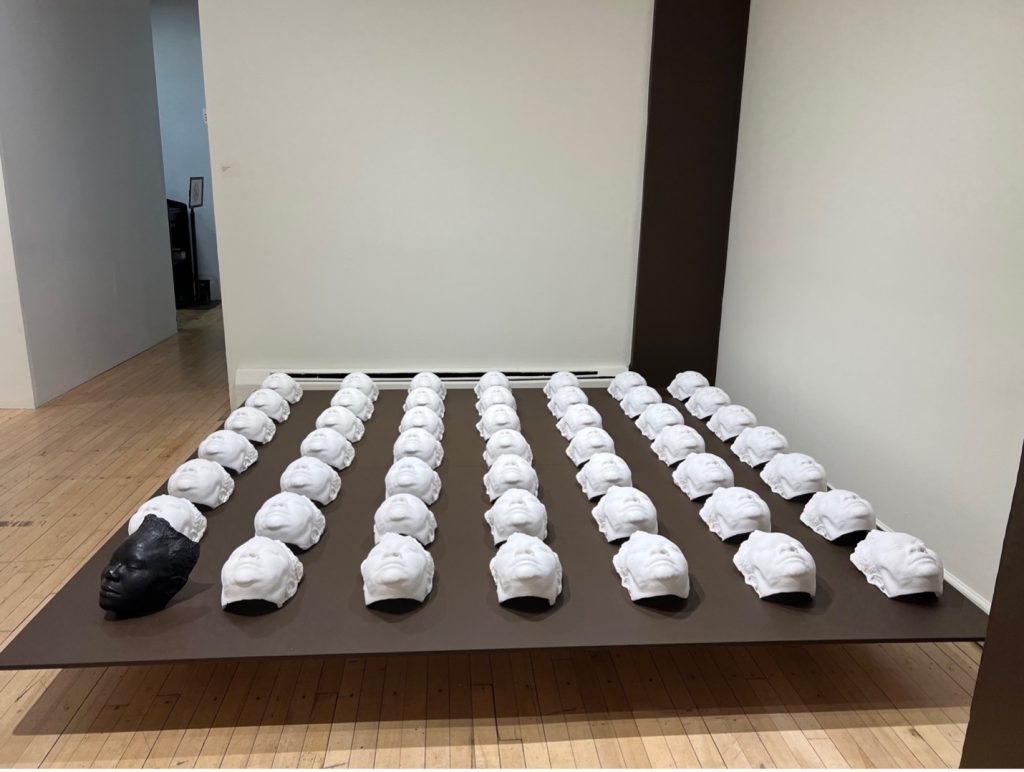
All photos courtesy of Louise Cutler
This interview and his opinion is exactly why Black American art should be collected, preserved and exhibited in museums and other public historical institutions for the same reason white American painting and European counterparts art are collected and preserved. To document lives lived, stories, a culture, a time, an historical moment, and the events of a group of people. This serves to preserve in time and forever an artist’s visual interpretation of the world as he/she sees it. That story has not been allowed for the Black artist.
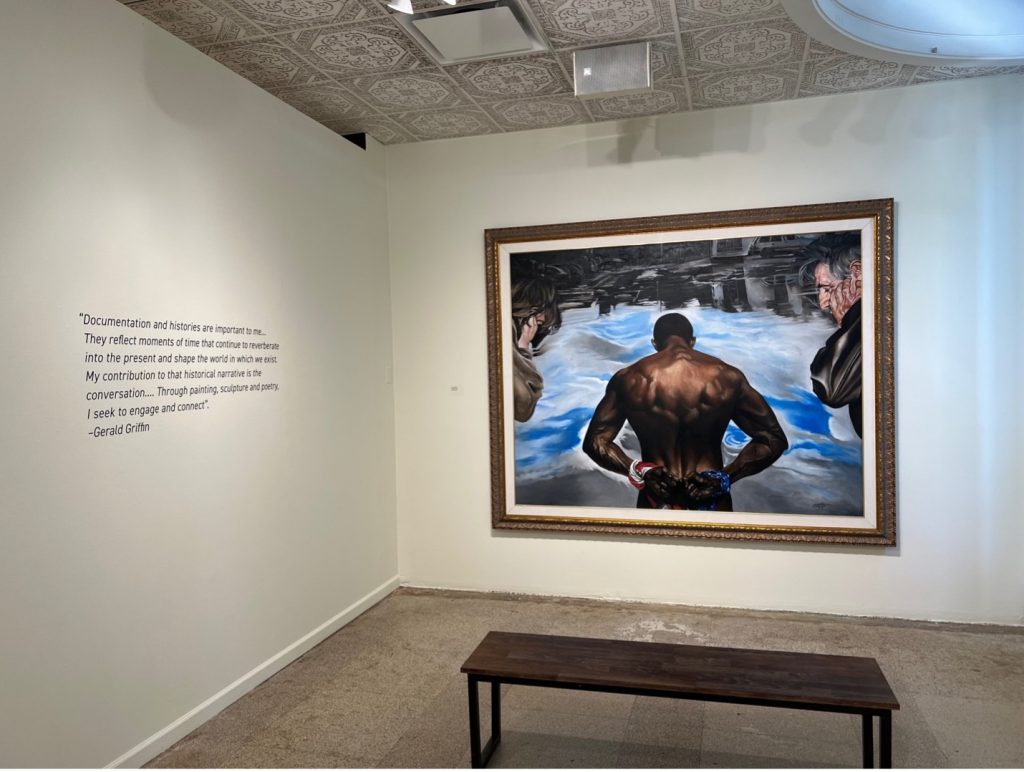
All photos courtesy of Louise Cutler
Our visual narratives have not been allowed to be heard, or accepted, the Black artistic voice has been silenced only accepted amongst its own communities, galleries, and at art fairs. The percentage of museum-owned Black work is staggeringly low compared to their white and European counterparts. 85.4% of the works in the collections of all major U.S. museums were created by White artists and 87.4% were by male artists. African American artists accounted for the lowest share with just 1.2% of the works. As Gerald Griffin explained in his painting 2 Buckets: “The American Dream seems to be malapportioned. Though there is abundance of life to be had in America, more often than not we as Black people are still left with 2 buckets of chicken feed.”
A Culture Preserved (in the Black Experience) represents how we as Black artists preserve our culture visually, how we speak out against injustices, how we live our lives, raise our children, our successes, and failures. It is how we pave the way for future generations and leave our mark, we were here. It reflects our strong heritage that has shaped the values, beliefs, and aspirations of a nation of people who have been stolen, beaten, and enslaved; yet thrived and survived. A people that has risen from the muck and mire, and have been continually degraded, a people that have persevered in the midst of challenges and continual oppositions to define our own identity and path.
The artwork in this exhibition takes our cultural heritage and mingles it with our present-day struggles, reaching those unobtainable and denied goals and achievements to become the voice for the Black culture community today.

All photos courtesy of Louise Cutler
“The black artist is dangerous. Black art controls the ‘Negro’s’ reality, negates negative influences, and creates positive images”. Sonia Sanchez
The Negro, Black, African American artistic story does not always paint a pretty picture of America, but it represents truth told from the Black artist perspective.
“All art is a kind of confession, more or less oblique. All artists, if they are to survive, are forced, at last, to tell the whole story; to vomit the anguish up.”
― James Baldwin

All photos courtesy of Louise Cutler
This exhibition exists for preservation, cultural awareness, and affirmation as well as to share the cultural richness of the Black community. It is designed to present to the viewer a visual narrative told through the eyes of the Black artist from around the country. It is meant to spark conversation collectively, and to create dialogue that stimulates communal growth while exploring how we as Black Americans relate to and fit within the so-called American dream where we have had to consistently reshape and reformulate our identities.
Charles Birdwhistle, former African American resident of Fort Collins in1899 said: “The Negro’s past can never be forgotten; his present is being carefully observed, and his future is yet to be made.” In so many ways, this statement is still true today, especially when it comes to Black artists’ art being collected and preserved.
Author’s Bio: Louise Cutler is a Fort Collins-based creationist, artist, sculptor, curator, vocalist, writer, and speaker. Her work is motivated by her desire to create beauty that cultivates truth, peace, and tranquility. Her painting Alone was selected to exhibit at the Royal Academy of Arts Summer Exhibit 2021, in London, England. She was a featured artist for the Center for Women’s Studies and Gender Research at Colorado State University in Fort Collins, for their Social Justice thru the Arts program. Ms. Cutler is currently the creator and founder of The Beauty of Blackness Fine Art show. The show features Black/African American artists and takes place in Fort Collins, Colorado. She also sits on the board for the Gregory Allicar Museum at Colorado State University.
Louise work can be found at www.Louisecutlerstudio.com and on https://louisecutlerstudio.wordpress.com/ Her social platforms are: https://www.instagram.com/louisecutlerstudio/ and https://www.facebook.com/LouiseCutlerStudio/


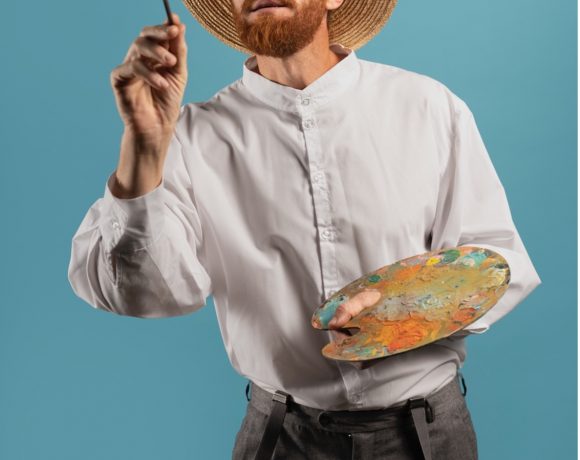
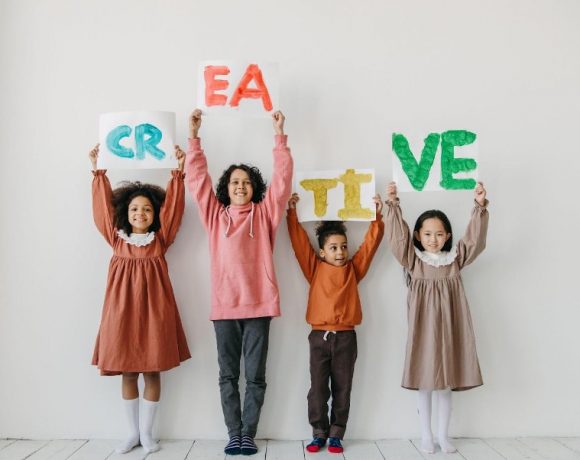





NO COMMENT